Dampness is Always Accompanied by Electrical Activity
One of the recent important discoveries was that the movement of humidity in masonry is ALWAYS accompanied by complex electrical activity. Whenever a wall fabric gets damp, electrical voltages and currents spring to life in it instantly – humidity and electrical activity being INSEPARABLE.
This statement can be verified easily in practice. Using a simple multimeter on a damp wall reveals the presence of a small voltage (usually under 500 mV) in the wall between the ground and some other damp point higher up the wall.

Humidity and wall voltages are inseparable
These electrical variations accompanying the presence of moisture in the fabric are resulting from at least 2 sources:
- From local molecular interaction between water molecules and the wall fabric, as water itself is a polar molecule containing electrical charges (H+ and OH-).
- From the wider surrounding electromagnetic (EM) environment, subject to large EM variations which most likely influences the electrical processes in the walls. For e.g. it has been found that lighting or magnetic field changes do cause measurable changes in the wall fabric.
1. Electrical Effects in Damp Masonry
As mentioned earlier, the movement of humidity in masonry is always accompanied by electrical activity. In the presence of humidity, the otherwise non-conductive wall fabric becomes conductive. Different levels of humidity are accompanied by different voltages in the wall fabric, then small currents start flowing in every direction (from higher voltage to lower voltage areas) in an attempt to even out voltage differences.
These electrical potentials appear in damp masonry due to the fluid nature of water. Water is not a static molecule, but a highly dynamic one, consisting of a small H+ part (proton) and a larger OH- part. These parts are in constant interchange, every water molecule breaking up and re-creating itself millions of times per second, the small agile H+ part (proton) jumping back and forth between neighbouring larger OH- molecules. This is known as proton hopping.
When water evaporates, a large amount of small and agile H+ protons jump through the surface, making water vapours positively charged. The slower OH- parts are left behind, making liquid surfaces slightly negative. Thus, evaporation brings about a charge separation in water – this is similar to a pack of runners, where the faster runners end up towards the front of the pack (vapour) while the slower ones stay behind (liquid).
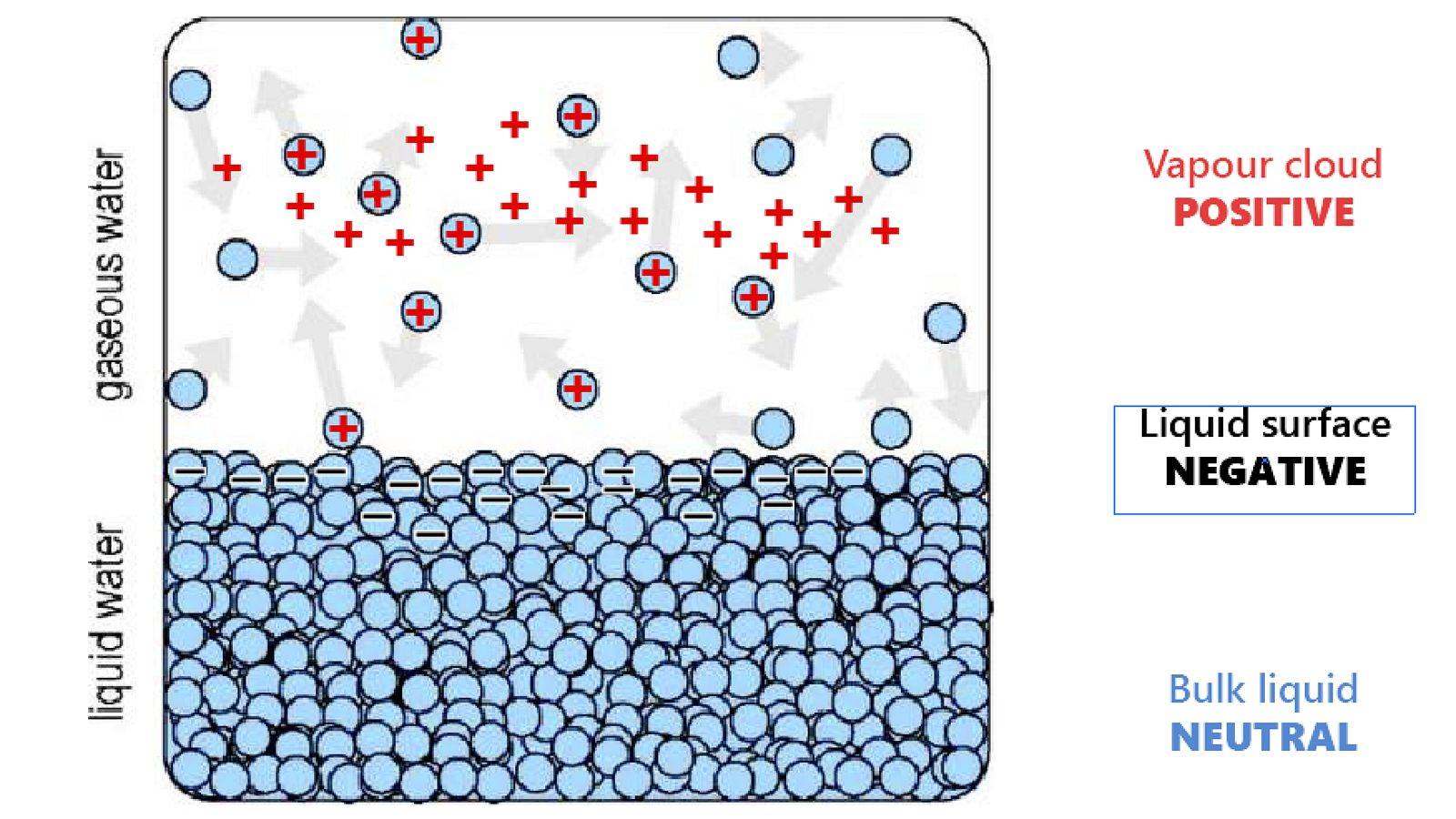
Electrical charge separation during evaporation
These electrical charges are transferred to the masonry, giving it either a positive and negative charge, depending on whether in a certain area vapours (positive) or liquid moisture (negative) dominates.
During condensation (liquefication), the reverse happens, the positive vapours gradually decrease while the liquid moisture content increases, leading to increased negative charges in the fabric.
In dry masonry electrical activity is non-existent. There is no charge separation, so a completely dry masonry is uncharged (zero or near-zero charge).
The presence of salts significantly increases electrical activity in damp masonry, taking that to a whole new level. This is because:
- Large salt molecules are themselves electrically charged, salts bringing additional electrical charges into the masonry. As the masonry ages and its salinity increases, its electrical activity increases.
- Salts, by increasing the conductivity of the wall fabric significantly boost its electrical activity.
These electrical parameters can be precisely measured and visualized with appropriate lab instrumentation. Here is some real-life data.
Electrical Voltages in Masonry
Small voltages up to 1-2 V are generated in damp masonry by the presence of moisture and salts.
At certain vapour/liquid ratios in the wall fabric the interdependence of humidity and electrical voltages can be seen very clearly, voltage variation (lower half) following humidity variations (upper half) very closely.
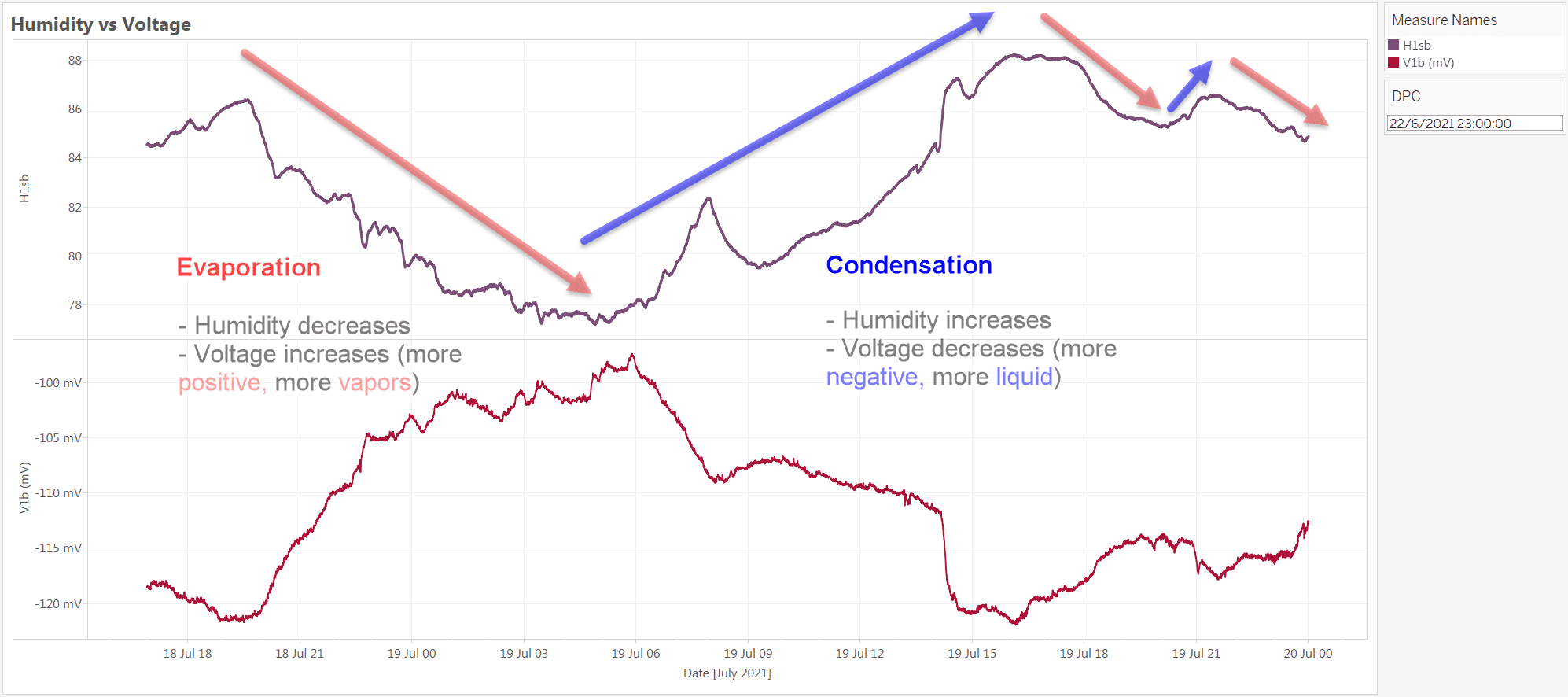
Wall voltages (bottom half) follow humidity changes (upper half) closely
In the presence of salts voltages can increase significantly (red/purple lines) in comparison to voltages measured in "plain" damp non-salty walls (blue/green lines).
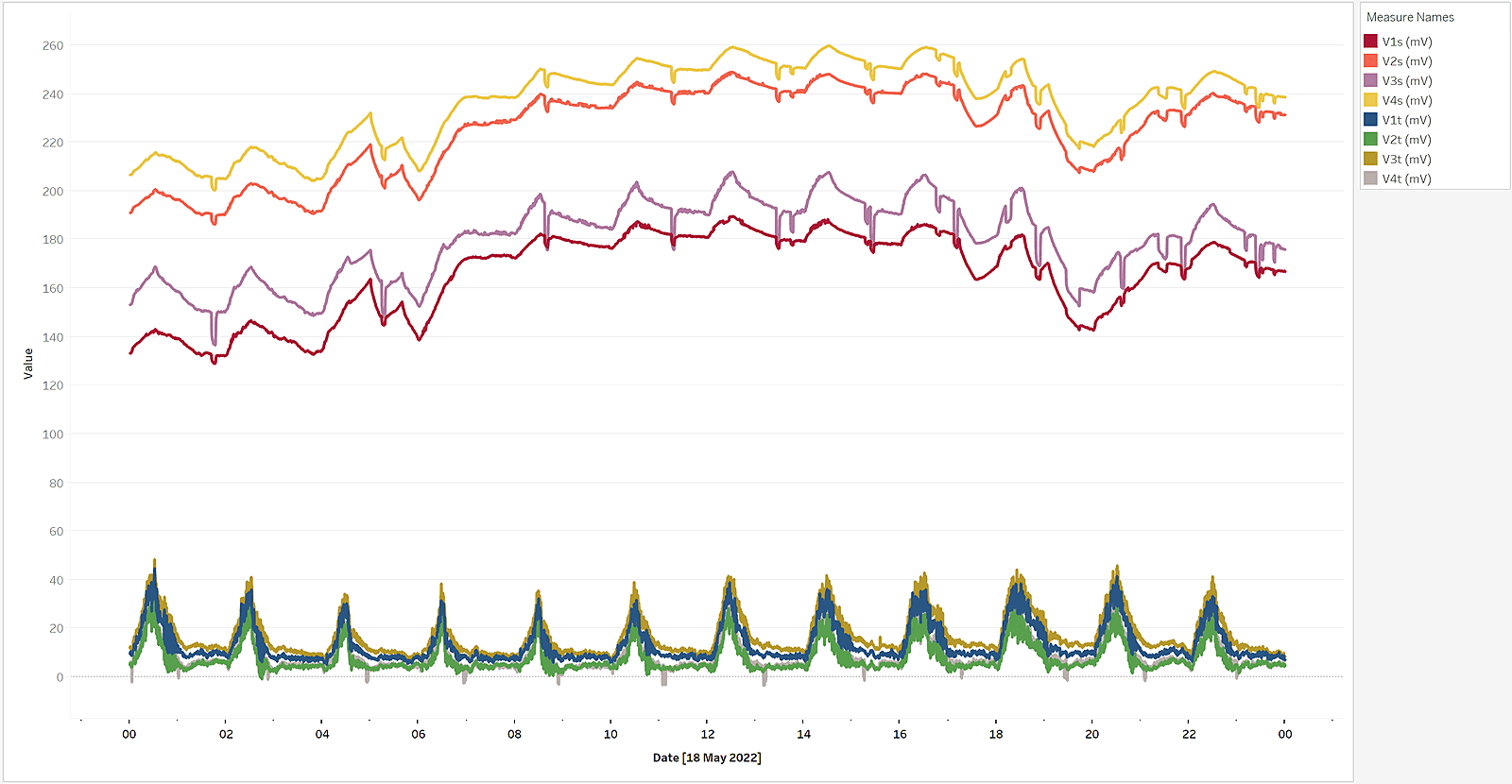
Voltages in damp masonry – salts cause increased electrical activity
Electrical Currents in Masonry
Just as different humidity levels cause pressure variations in the masonry leading to evaporation and condensation flows, electrical voltage differences lead to current flows between various points in an attempt to even-out the electrical variations of the wall fabric.
Just as water vapors flow from higher pressure to lower pressure (higher to lower evaporation) areas, electrical currents flow from higher to lower voltage areas. The presence of salts can increase these currents by 100 to 1,000 times or more, as illustrated below.
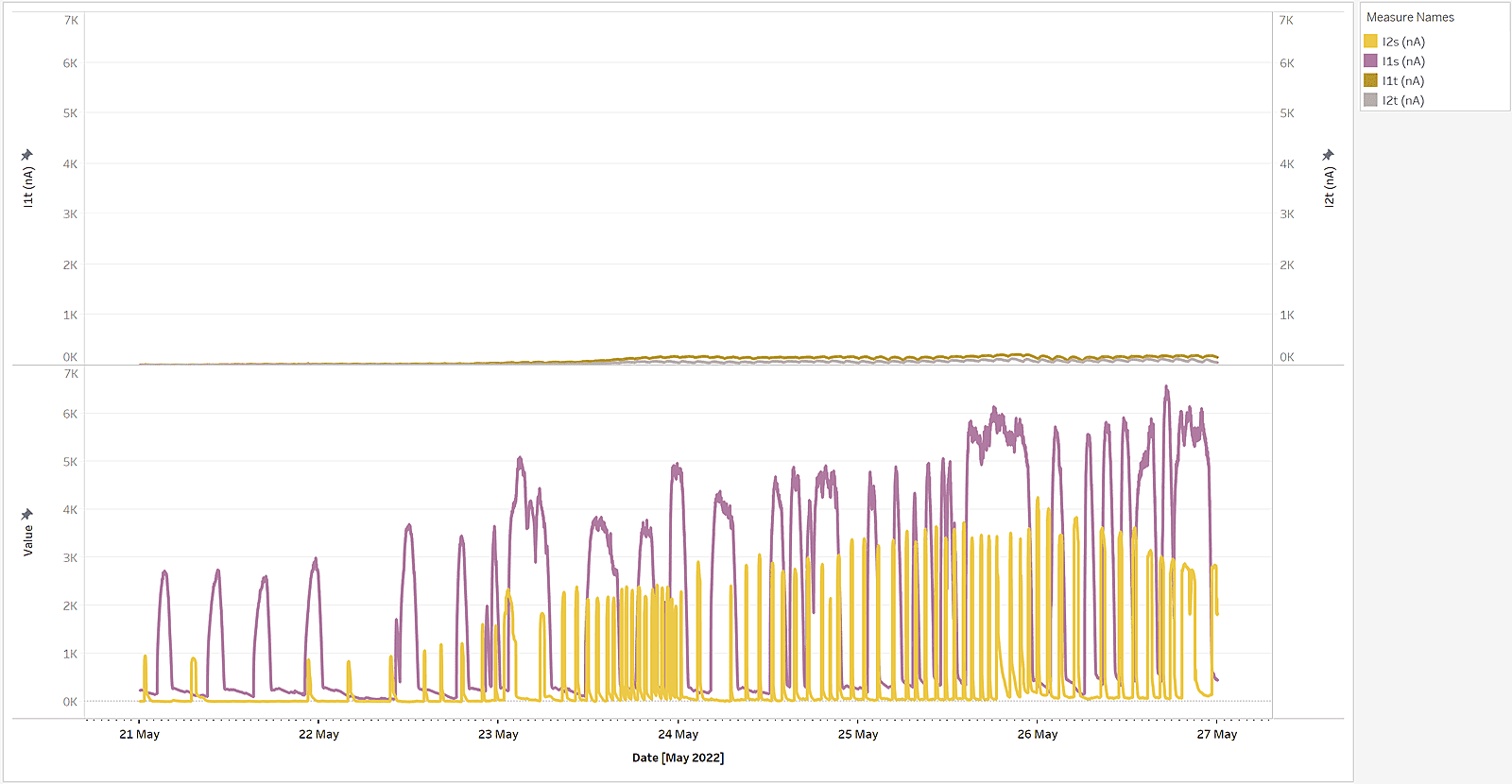
Electrical currents in salty masonry (lower half) are significantly higher than in non-salty masonry (upper half)
Depending on the moisture gradients in damp masonry, electrical currents can flow horizontally and/or vertically, as well as in between bricks and mortar if those are at different humidity levels (which most of the time are). Hence, the “breathing” mechanism of the wall fabric which creates ongoing humidity variations also generates a host of electrical variations in the masonry.
Electrical Conductivity of the Wall Fabric
As mentioned earlier, humidity and salts make the wall fabric electrically conductive. This can be quantified by measuring the masonry’s electrical resistance, which decreases when conductivity increases.
While a dry wall fabric’s electrical resistance can be extremely high (close to infinite), the resistance of a damp wall fabric can decrease by about 10,000 – 100,000 times – a very significant change.

Sharp decline in electrical resistance as the wall fabric gets wet
2. The Effect of the Electromagnetic Environment
In addition to the inter-molecular electrical effects described above, the external electromagnetic (EM) environment is also affecting the movement of moisture as all houses and walls are surrounded by open spaces filled with electromagnetic waves.
The Surrounding Electromagnetic (EM) Environment
The air around us is full of invisible electromagnetic (EM) waves. We are not only surrounded by but literally “swimming” in a sea of energy.
A lot of EM waves surrounding us are man-made. Planetary electromagnetic pollution, due to an exponential increase of wireless communications, have increased from the extremely low natural levels of the 1950s by about 1018 times, increasing by over 10 million times just from the 1980s onward.
We are undergoing an “electromagnetic climate change” which, no doubt, is also affecting to some extent our old buildings and our cultural heritage.
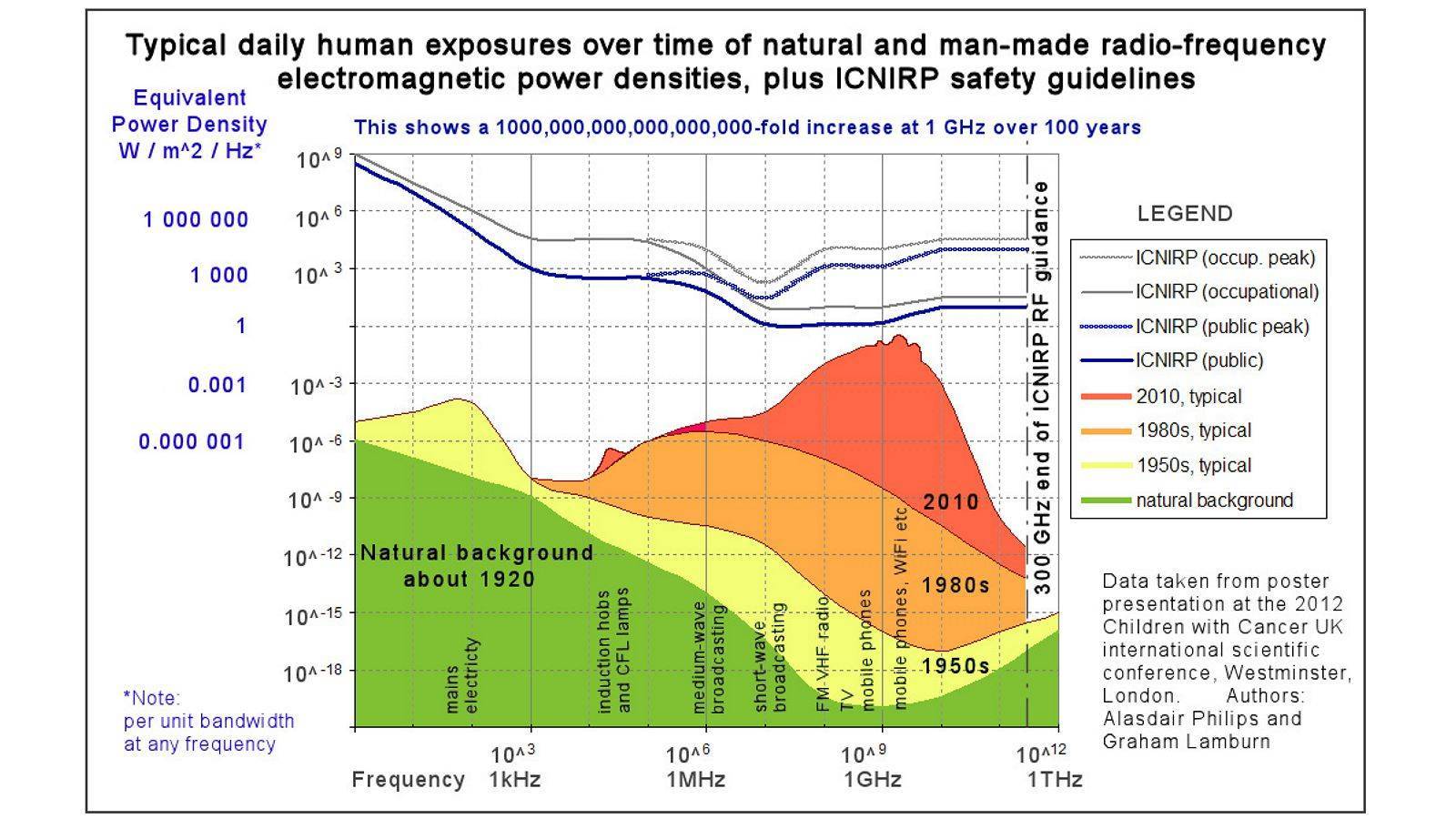
Man-made electromagnetic radiation has increased significantly during the past decades
In addition to man-made EM fields, planet Earth has its own natural magnetic field known as Earth’s geomagnetic field. This can also undergo significant variations as a result of its interaction with the Sun and solar wind, resulting in geomagnetic storms, substorms and geomagnetic pulsations.
Magnetic Fields Affect the Damp Wall Fabric
When wall capillaries are made conductive by humidity and salts, they to a large extent start behaving as regular electrical conductors. When an electrical conductor is subject to changing magnetic fields, that will generate in the conductor an electrical voltage and current. This is known in Physics as the law of electromagnetic induction.
Here are some of the geomagnetic pulsations visualized on a sensitive high-end magnetometer.
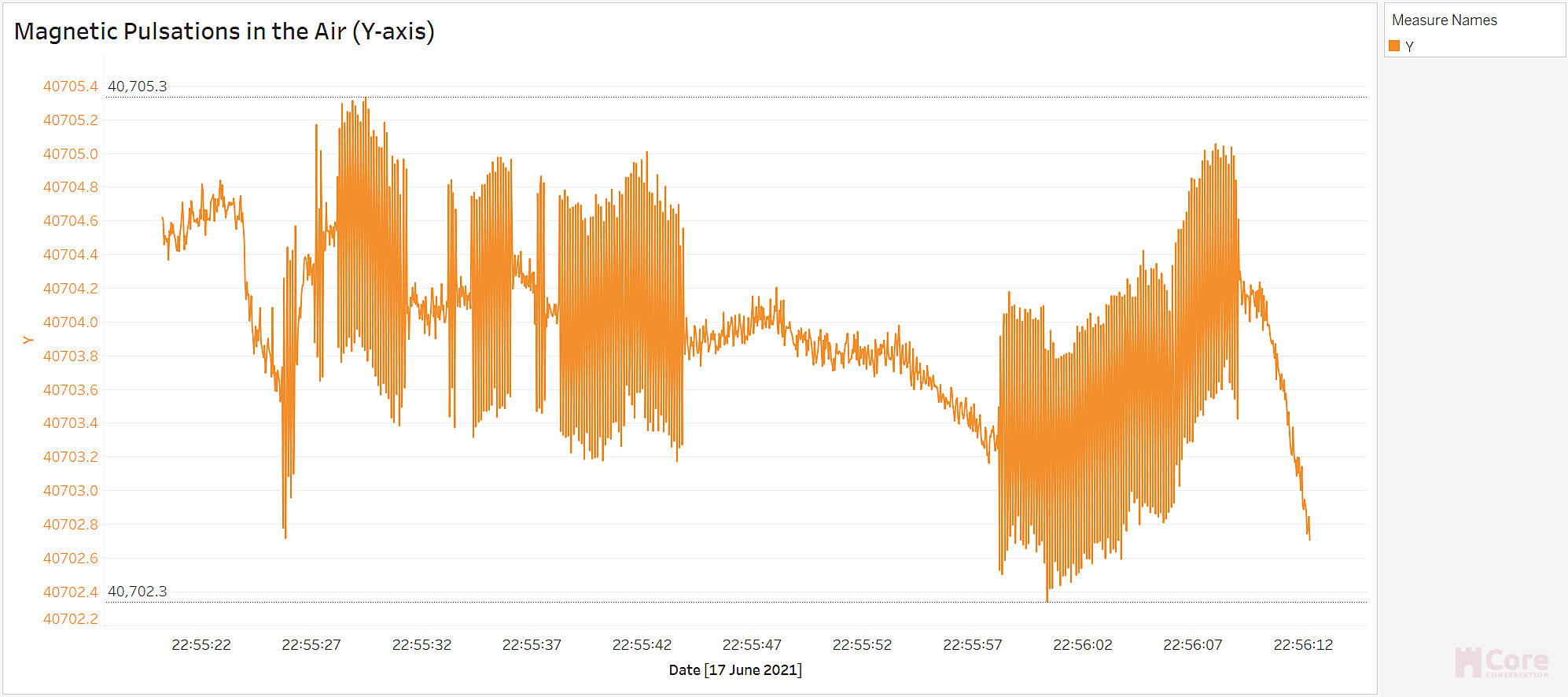
Geomagnetic pulsations in the air
These geomagnetic pulsations (orange) – sequences of randomly occurring fast-changing pluses – penetrate the walls, transferring their energy to the wall fabric, generating fast-changing voltages (red) and currents (blue) inside the wall fabric. Although geomagnetic pulsations are relatively small (about 1-2 nT), their effect onto the even tinier water molecules (about 0.1 nm) is significant.
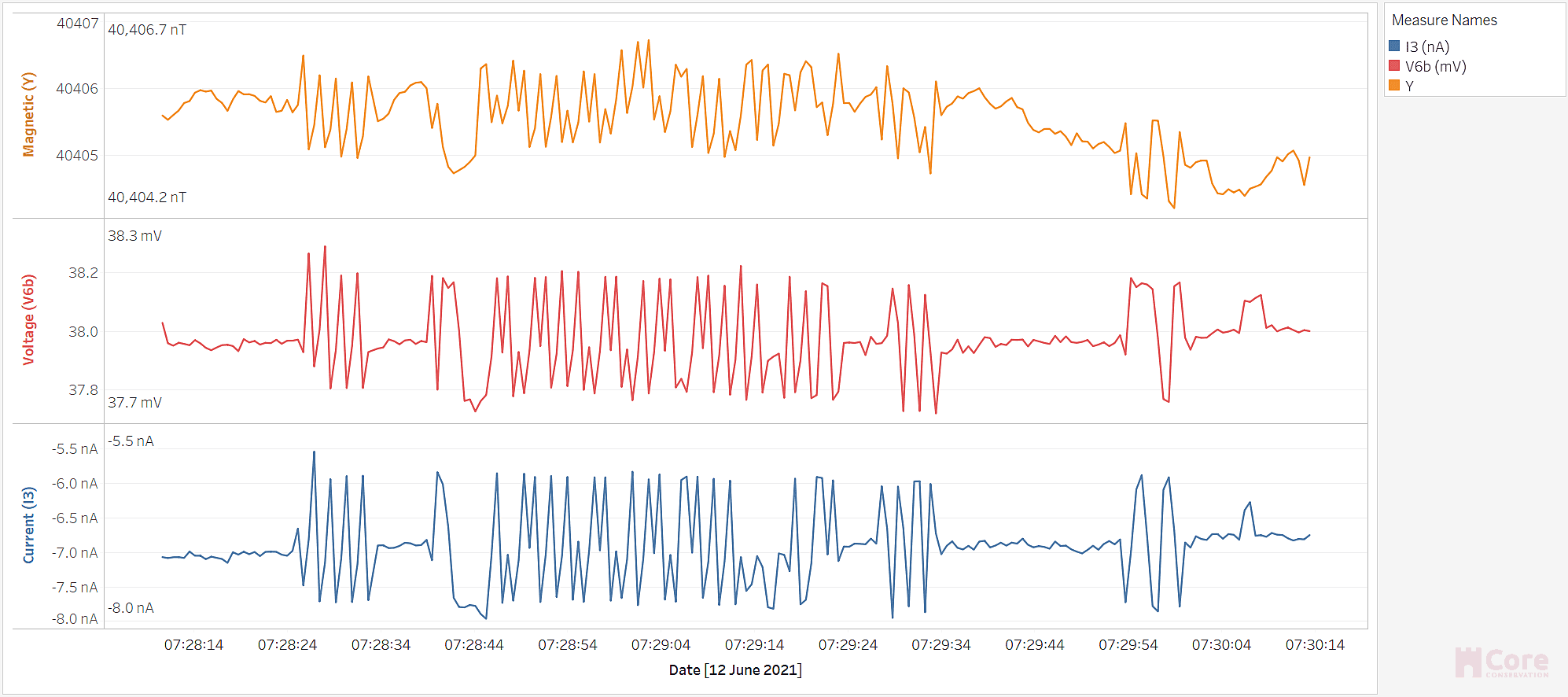
Geomagnetic pulsations create sharp pulsating voltages and currents in the wall fabric
The induced currents in the wall fabric, having very sharp fronts, inject their energy into the electrical double layer (EDL), charging-up the capillary surfaces. This increases the electrical double layer’s ability to bond and retain more water molecules than in a less charged state, keeping the masonry damper.
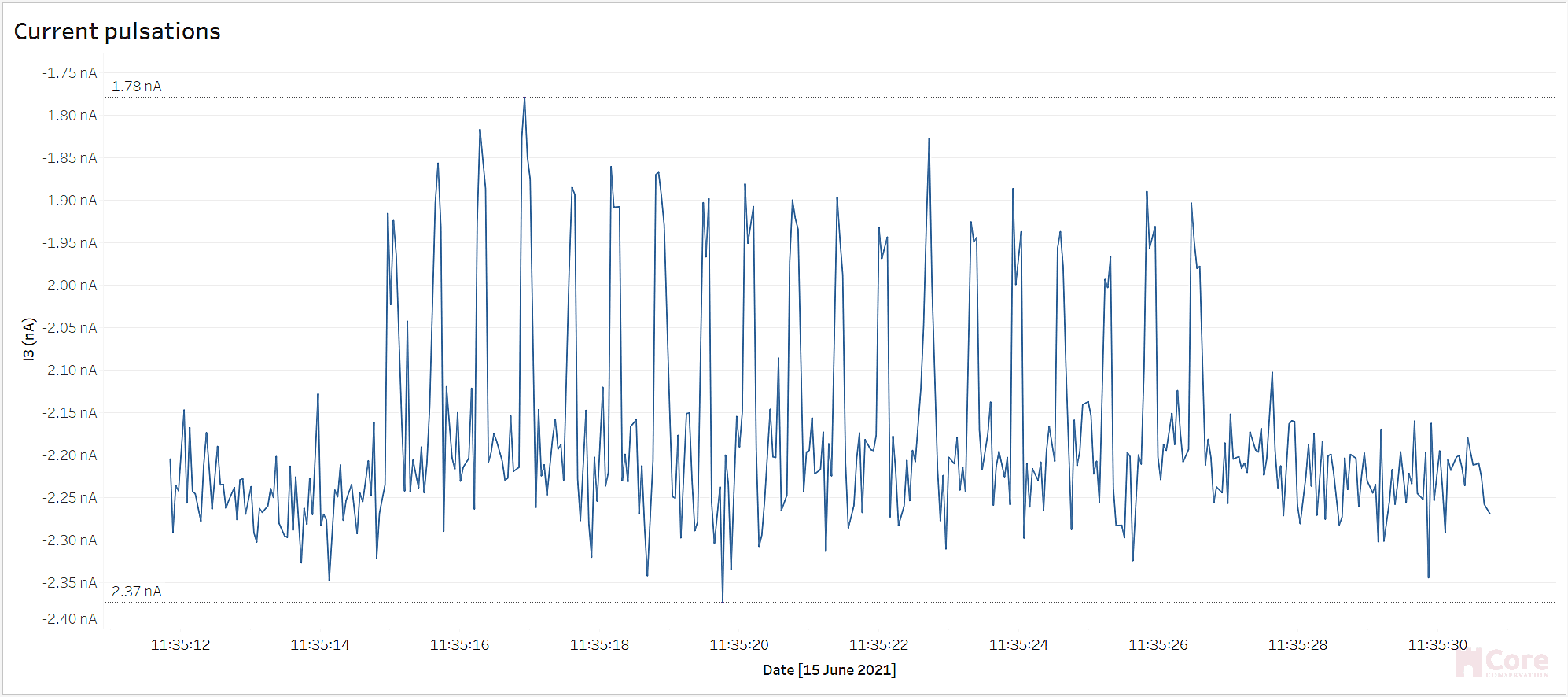
Edit your caption text here
Some of these concepts are discussed in a more interactive format in the video below:
Why Are Electrical Effects in Old Masonry Important?
Existing research data suggests that magnetic fields seem to act as a catalyst or an aggravating factor, their action contributing to the wetting of the masonry.
Here is the sequence:
- Water vets the masonry. Initially, at no or low salinity levels, most water can easily evaporate, breathability assisted by heating doing its job.
- As a result of the ongoing wetting-drying cycles, salinity build-up commences and intensifies, primarily affecting areas near ground level (rising damp) or seaside properties subject to sea salts. As the salt content of the masonry increases, breathability will have less and less effect.
- Salts also act as a bridge, linking the wall fabric to the electromagnetic environment, making it subject to a host of electrical phenomena. This area is one of the is the least researched in building physics.
Salts working in conjunction with EM fields are one of the most important variables of the topic of moisture in old buildings. Understanding these phenomena is an integral part of building conservation.
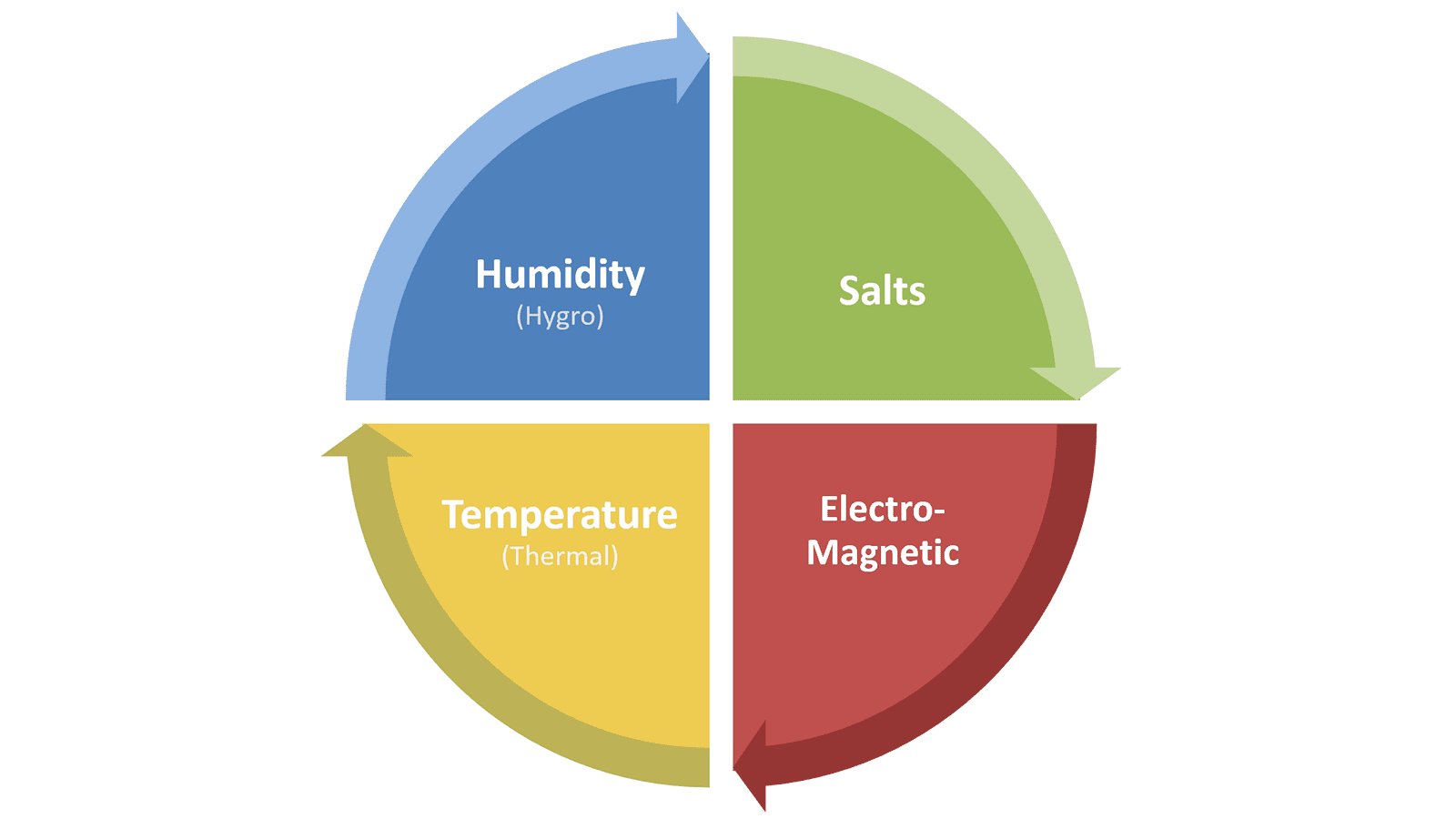
Main variables affecting the movement of moisture
Research of this very interesting field of building sciences is underway, and no doubt it will lead to many interesting findings in the near future, resulting not only in a better understanding of moisture, but also in the development of novel, smarter, less-invasive technologies.
This research line led to the development of the magnetic DPC technology – a novel way of solving rising damp in old buildings in a building-friendly, non-invasive, reversible way.











